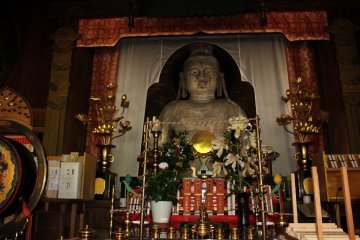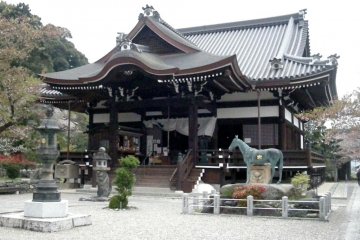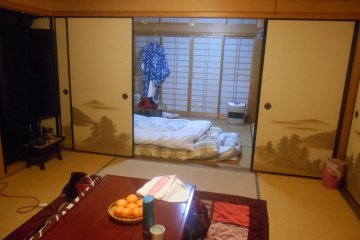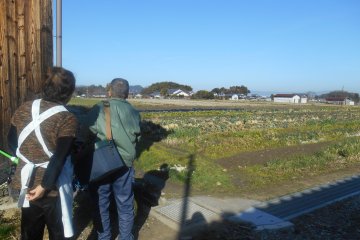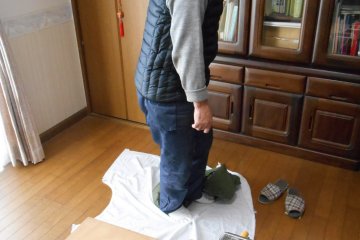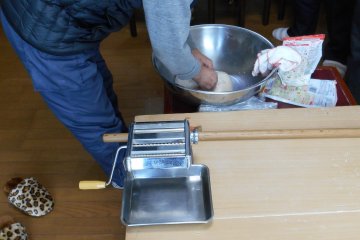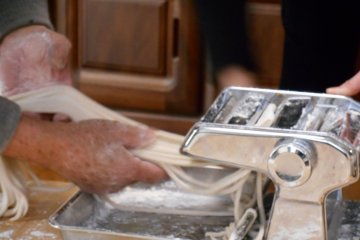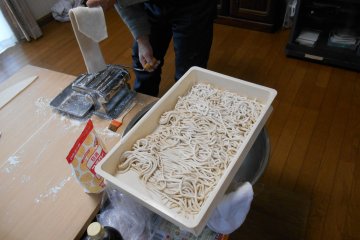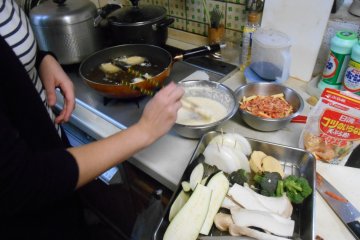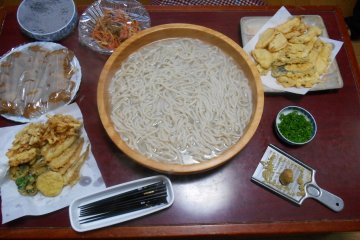During a stay in Nara Prefecture a visit of the city of Asuka is a must see. In Asuka activities abound and include a great mix of both nature and history. Famous sites include the Asuka-dera temple and the kofun, the famous burial ground that resembles a keyhole.
Though Asuka is famous for being one of Japan's best preserved ancient cities, there is an emergence of technology in recent years to aid tourism. Winding through the city in a futuristic electric car and viewing a hologrophic representation of an original temple from the 6th century are a few examples.
On the more traditional side of the spectrum choosing a traditional minpaku homestay accommodation option is highly recommended as a place to spend the night, eat some of your meals and relax. In short a minpaku is unlike a hotel or ryokan in that you stay in a traditional house and experience Japanese life. In therural household you can find traditional cuisine made with home-grown or locally-sourced ingredients. Minpaku are not commercial accommodations, but a new type of tourism, a sustainable alternative to mass-market travel. At the arrival to my minpaku home I found a large beautifully designed home surrounded by an impressive garden.
After a short tea break to greet the family I was given some free time to relax and unpack. Once I came back down I was aksed to participate in the preparation of dinner: homemade udon. First we mised the dough, made from wheat flour, salt and water. Once ready, the host showed me the technique for kneading the dough by placing it inside a plastic bag, covering with linen, and actually walking across the dough several times! The traditional Japanese method of kneading udon is done with the feet. We then pass the dough into the pasta machine, sprinkle with potato starch and place into boiling water for a quarter of an hour.
After udon, comes the accompaniment : vegetable tempura. Tempuras can be made from all kinds of products; fish, shrimp, mushrooms, eggplant ... You just have to plunge your ingredients into a mixture composed of eggs, fresh water, flour and fry them in the tempura oil.
The experience of preparing dinner with the hosts is a great ice breaker. Afterwards, sitting on the floor around the low table of the living room, everyone takes their share from the huge dish of noodles and other dishes that were prepared separately. Everything is homemade, and almost all of the vegetables were picked up a few hours earlier from the garden or nearby mountain paths. Outside, there are many daikon (white radish), carrots and other vegetables cut out to dry in the sun in preparation for the next meal.
After the meal concluded, the experience continued with a chance to test my skills as a calligrapher with the hostess. Learning the strokes may seem difficult at first, but she knows how to guide your actions and quickly improve your technique. If you are not into the cultural side of calligraphy, tea, etc. you can always join the host for a cup a sake.
When it's time for bed, you can enjoy the comfort of washitsu, Japanese-style rooms characterized by tatami mat flooring and paper sliding doors. Before you slip into your futon, enjoy a moment of heat from the kotatsu, a heated low table, installed in your room perfect for a few minutes of relaxation.
You will leave your guests home with many new recipes in mind, but also with the feeling of having lived an authentic experience taken from the everyday life of the inhabitants of Asuka.
Hosts of minpaku house often do not speak English, but you can get by with gestures and very basic communication. There is always an electronic translator to facilitate conversations.





